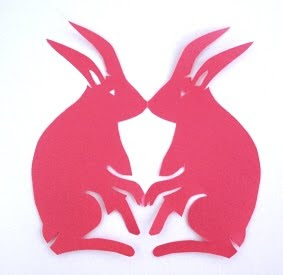It's very hot today. Temperatures have reached 33 degrees Celsius in Yokohama and have reached over 35 degrees Celsius in several areas.
Jugoya(十五夜) means the night or the moon on the 15th day of the 8th month in the lunar calendar(corresponding to September 22nd of this year in the Gregorian calendar).
We can see clear full moon tonight. Jupiter is near the moon.
Moon Viewing on this day derives from the Chinese Mid-Autumn Festival, but we celebrate another moon viewing named Jusanya(十三夜) on the the 13th day of the 9th month in the lunar calendar. The event is unique to Japan and is also called Mame-meigetsu(豆名月, bean harvest moon)or Kuri-meigetsu(栗名月, chestnut harvest moon).
Jugoya is also called Imomeigetsu (芋名月) or "Potato harvest moon", so these confections contain potatoes.
Potato Manju(ぽてと饅頭):
confection using potato
Oimosan(おいもさん):
confection using sweet potato
Usagi Manju(うさぎ饅頭: rabbit-shaped steamed buns filled with bean paste)
"Where do rabbits live, earth, moon or sun?"
A guest had to answer the question within five seconds on a TV quiz program. He said, "Moon!"
Of course, answer to the quiz is earth, but rabbits are strongly connected to the moon in Japan. We see rabbit pounding steamed rice on the moon surface.
It comes from an Indian mythology. A rabbit without having a specialty was not able to do good for an old man, so it gave the meat of itself to him by drowning itself into the fire. The old man was Taishakuten (帝釈天, Śakra in Sanskrit), and he placed the charred rabbit on the moon surface.
ハートシリーズ デザイン・制作/石津喜代子
"heart Series" designed by Kiyoko Ishizu
Full moon, Japanese pampas grass and Tsukimi Dango
Nobuaki Seto(ed), Oheya ni Kazaru Wafu no Mini quilt(Tokyo:Nihon Vogue-sha,1994),P.50.
瀬戸信昭編集,お部屋に飾る和布のミニキルト(東京:日本ヴォーグ社,1996年),P.50.
抱き薄
Daki Susuki (Japanese pampas grass )
対い兎
Mukai Usagi
下中菜穂,「切り紙 もんきり遊び」,株式会社宝島社,2007年,P.7,12
Nabo Shimonaka, Kirigami Monkiri-asobi,(Tokyo:TAKARAJIMASHA,Inc.,2007),P.7,12
This blog mainly introduces traditional Japanese things including seasonal events, flowers, confectionery, handicrafts, bunraku(Japanese puppet theater). Short introductions and links to all of my blog posts are shown on four calendar pages on sidebar.
Events:
2025 Fall Foliage Forecast
https://www.jrailpass.com/blog/japan-autumn-leaves-forecast
https://n-kishou.com/corp/news-contents/autumn/?lang=en
when and where to see fall foliage(Japanese version only):
https://weathernews.jp/koyo/
https://sp.jorudan.co.jp/leaf/
https://koyo.walkerplus.com/
2025 Fall Foliage Forecast
https://www.jrailpass.com/blog/japan-autumn-leaves-forecast
https://n-kishou.com/corp/news-contents/autumn/?lang=en
when and where to see fall foliage(Japanese version only):
https://weathernews.jp/koyo/
https://sp.jorudan.co.jp/leaf/
https://koyo.walkerplus.com/







No comments:
Post a Comment